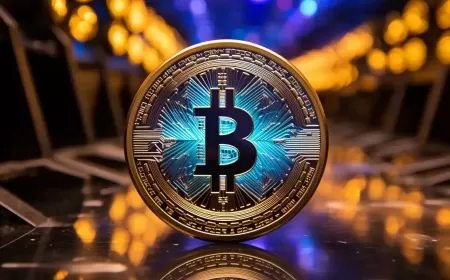Federal Reserve Worries About Cryptocurrency Stability
Federal Reserve Concerns: What You Need to Know About Crypto Stablecoins and Financial Stability.

The collapse of Silicon Valley Bank in March last year shed light on the vulnerabilities inherent in stablecoins, a type of cryptocurrency that aims to maintain a stable value. During this period of upheaval, Circle Internet Financial Ltd., a prominent crypto company, found itself unable to access $3.3 billion in cash reserves backing its USD Coin held at the bank. Stablecoins, like the USD Coin, are digital tokens designed to mirror the value of traditional currencies such as the US dollar, providing traders with a means to swiftly transition between volatile cryptocurrencies and more stable assets resembling cash, all without relying on traditional banks. These tokens typically track the value of fiat currencies by holding reserves such as cash or government bonds.
However, the SVB incident exposed the susceptibility of stablecoins to disruptions in the conventional financial system. With approximately 8% of USDC's reserves trapped in the failed bank, panic ensued among traders, causing the coin's value to plummet below $1. Following government intervention that restored confidence in the banking system, USDC's value rebounded. A spokesperson for Circle emphasized the company's post-crisis efforts to fortify USDC's market infrastructure, aiming to establish it as the most robust and transparent digital dollar available.
Despite these efforts, concerns persist regarding the potential impact of stablecoins on traditional financial markets, especially given their significant market value, which stood at $136 billion as of late January. Hilary Allen, a law professor at American University Washington College of Law, has highlighted the growing interconnectedness between stablecoins and the traditional financial system, raising alarms about potential repercussions.
This intertwining continues as established financial institutions increasingly engage with stablecoins. BlackRock Inc., the world's largest asset manager, now manages USDC reserves, while Bank of New York Mellon Corp. provides custody services for these assets. Circle's recent filing for an initial public offering further underscores the mainstream acceptance of stablecoins. Despite skepticism from some traditional banking figures, such as JPMorgan Chase & Co. CEO Jamie Dimon, institutions are exploring opportunities in the stablecoin space, driven by the potential for innovation in cross-border payments and trade settlement.
However, regulators remain wary of the risks posed by stablecoins, particularly their potential to disrupt financial stability. The Federal Reserve Bank of New York has likened stablecoins to money-market funds, citing historical instances of investor panic leading to destabilization. Concerns also extend to the lack of transparency and regulation within the stablecoin ecosystem, with issuers facing scrutiny over their backing reserves and regulatory compliance.
Efforts to regulate stablecoins have encountered obstacles, with legislative progress stalled in Congress and federal agencies grappling over regulatory frameworks. Recent enforcement actions against stablecoin providers, such as Paxos and Terraform Labs, underscore the heightened regulatory scrutiny facing the industry.
As stablecoins continue to evolve, traditional financial players are cautiously embracing this emerging technology, mindful of both its potential benefits and risks. While stablecoins offer opportunities for innovation in digital payments, concerns about their impact on financial stability and regulatory compliance persist, prompting ongoing debate and scrutiny within the financial industry and regulatory circles.
Also Read: Bitcoin ETFs: Pros, Cons, and Investment Insights





























































